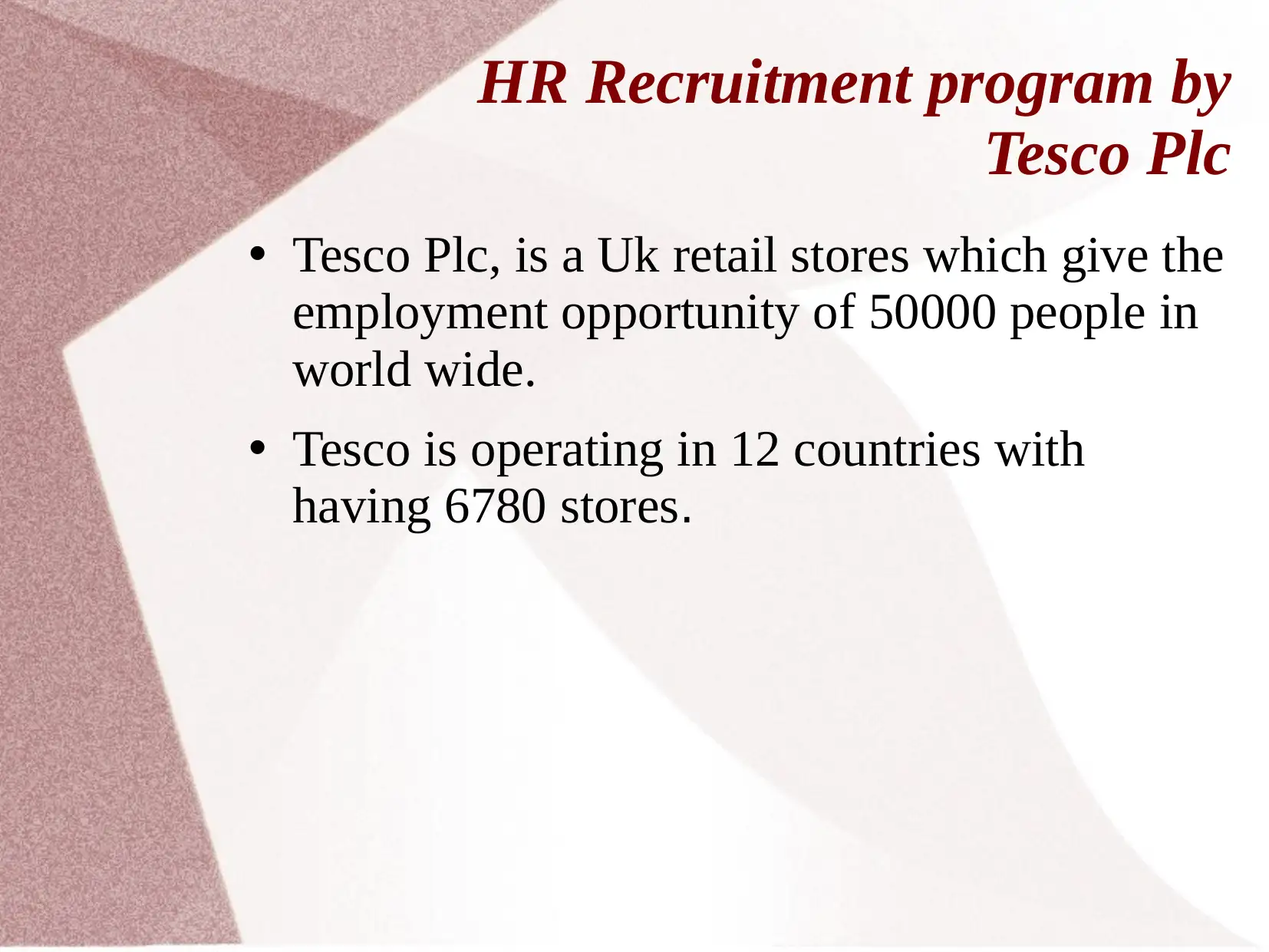Tesco Plc: Analysis of Recruitment Program and Business Strategy
VerifiedAdded on 2023/04/05
|7
|324
|315
Report
AI Summary
This report provides an analysis of Tesco Plc's recruitment program, highlighting its importance in achieving business growth. It examines the company's strategy, which focuses on sustainable, long-term growth, and the role of recruitment in identifying needs, reducing costs, and fostering employee loyalty. The report emphasizes the significance of leadership in the recruitment process, including negotiation skills and stakeholder identification. Additionally, it references various studies and research papers that support the concepts discussed, offering a comprehensive overview of recruitment practices and their impact on organizational success. The report also provides a detailed look at the roles of the leadership and the importance of the recruitment process in the company's success.
1 out of 7









![[object Object]](/_next/static/media/star-bottom.7253800d.svg)